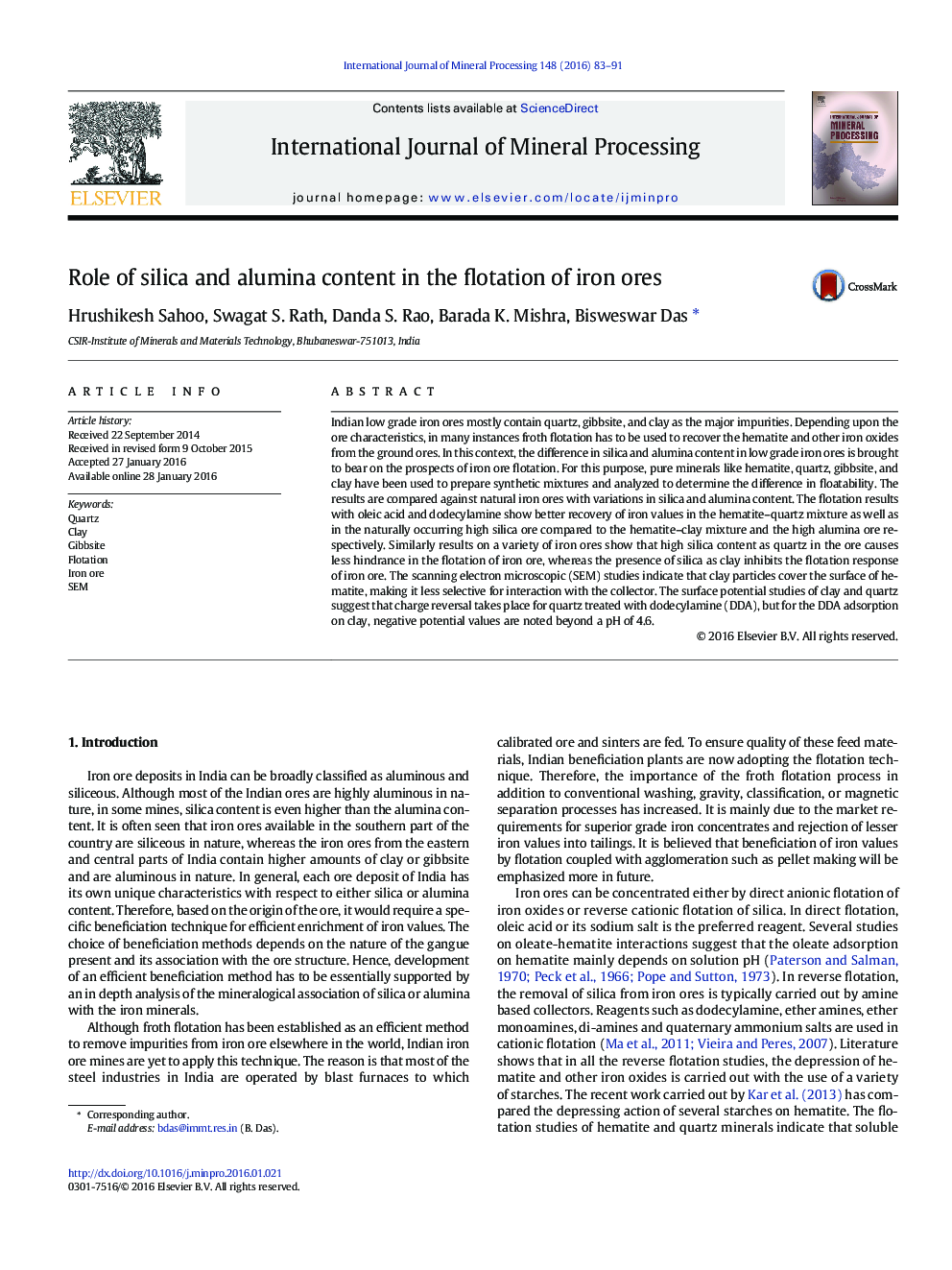| کد مقاله | کد نشریه | سال انتشار | مقاله انگلیسی | نسخه تمام متن |
|---|---|---|---|---|
| 213781 | 1425785 | 2016 | 9 صفحه PDF | دانلود رایگان |
• Flotation response of iron ore depends on its impurities.
• Silica rich ores float better compared to alumina rich ores.
• Clay and gibbsite coat on hematite and hinder flotation.
• SEM studies support less coating of quartz due to coarser size.
• Silica in the form of jasper present in BHJ ore is less floatable.
Indian low grade iron ores mostly contain quartz, gibbsite, and clay as the major impurities. Depending upon the ore characteristics, in many instances froth flotation has to be used to recover the hematite and other iron oxides from the ground ores. In this context, the difference in silica and alumina content in low grade iron ores is brought to bear on the prospects of iron ore flotation. For this purpose, pure minerals like hematite, quartz, gibbsite, and clay have been used to prepare synthetic mixtures and analyzed to determine the difference in floatability. The results are compared against natural iron ores with variations in silica and alumina content. The flotation results with oleic acid and dodecylamine show better recovery of iron values in the hematite–quartz mixture as well as in the naturally occurring high silica ore compared to the hematite–clay mixture and the high alumina ore respectively. Similarly results on a variety of iron ores show that high silica content as quartz in the ore causes less hindrance in the flotation of iron ore, whereas the presence of silica as clay inhibits the flotation response of iron ore. The scanning electron microscopic (SEM) studies indicate that clay particles cover the surface of hematite, making it less selective for interaction with the collector. The surface potential studies of clay and quartz suggest that charge reversal takes place for quartz treated with dodecylamine (DDA), but for the DDA adsorption on clay, negative potential values are noted beyond a pH of 4.6.
Journal: International Journal of Mineral Processing - Volume 148, 10 March 2016, Pages 83–91
